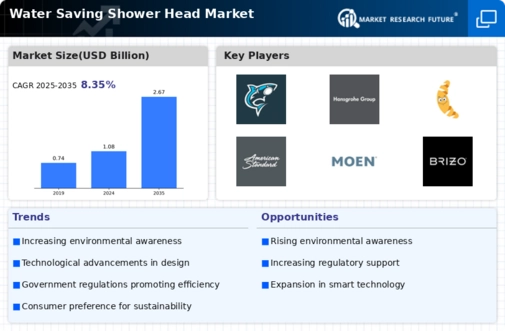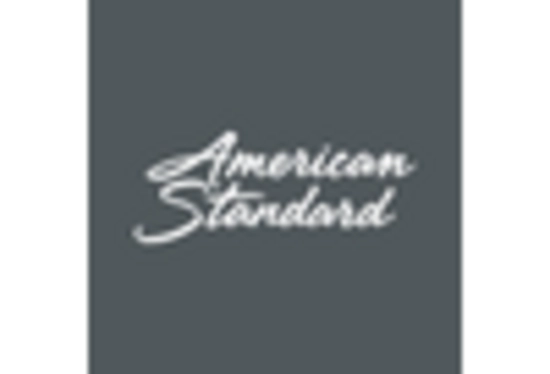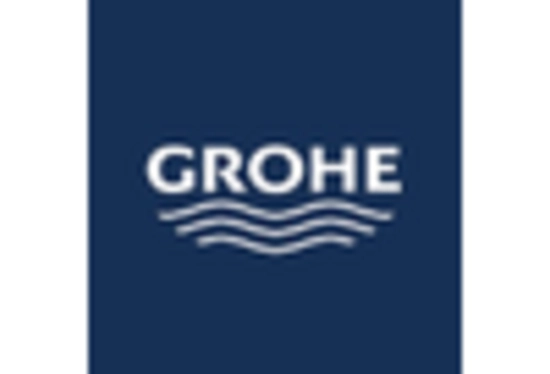The Water Saving Shower Head Market is currently characterized by a dynamic competitive landscape, driven by increasing consumer awareness regarding water conservation and sustainability. Major players such as Moen (US), Kohler (US), and Delta Faucet (US) are strategically positioning themselves through innovation and product differentiation. Moen (US) has focused on integrating smart technology into their products, enhancing user experience while promoting water efficiency. Kohler (US) emphasizes sustainable design, aligning its product offerings with eco-friendly initiatives, which resonates well with environmentally conscious consumers. Delta Faucet (US) has adopted a strategy of regional expansion, targeting emerging markets where water scarcity is becoming a pressing issue. Collectively, these strategies not only enhance brand loyalty but also shape a competitive environment that prioritizes sustainability and technological advancement.
In terms of business tactics, companies are increasingly localizing manufacturing to reduce costs and improve supply chain efficiency. This approach allows for quicker response times to market demands and enhances product availability. The market structure appears moderately fragmented, with several key players holding significant market shares while also facing competition from smaller, niche brands. The collective influence of these major players is substantial, as they set industry standards and drive innovation, thereby shaping consumer expectations and market trends.
In August 2025, Moen (US) launched a new line of water-saving shower heads that utilize advanced aeration technology, which reportedly reduces water flow without compromising performance. This strategic move not only reinforces Moen's commitment to sustainability but also positions the company as a leader in innovative water-saving solutions. The introduction of this product line is likely to attract environmentally conscious consumers and enhance Moen's market share in the competitive landscape.
In September 2025, Kohler (US) announced a partnership with a leading environmental organization to promote water conservation awareness. This collaboration aims to educate consumers on the benefits of water-saving fixtures, including Kohler's own products. By aligning with a reputable organization, Kohler enhances its brand image and demonstrates its commitment to sustainability, which could lead to increased consumer trust and loyalty.
In July 2025, Delta Faucet (US) unveiled a new digital marketing campaign focused on the benefits of water-saving technologies. This campaign highlights the long-term cost savings and environmental benefits of using Delta's products. By leveraging digital platforms, Delta aims to reach a broader audience, particularly younger consumers who are more inclined to prioritize sustainability in their purchasing decisions. This strategic focus on digital engagement is likely to enhance Delta's competitive positioning in the market.
As of October 2025, the Water Saving Shower Head Market is witnessing trends that emphasize digitalization, sustainability, and the integration of artificial intelligence in product development. Strategic alliances are increasingly shaping the competitive landscape, as companies collaborate to enhance their technological capabilities and market reach. Looking ahead, competitive differentiation is expected to evolve, with a notable shift from price-based competition to a focus on innovation, technology integration, and supply chain reliability. This transition suggests that companies that prioritize these aspects will likely gain a competitive edge in the increasingly eco-conscious market.


















Leave a Comment